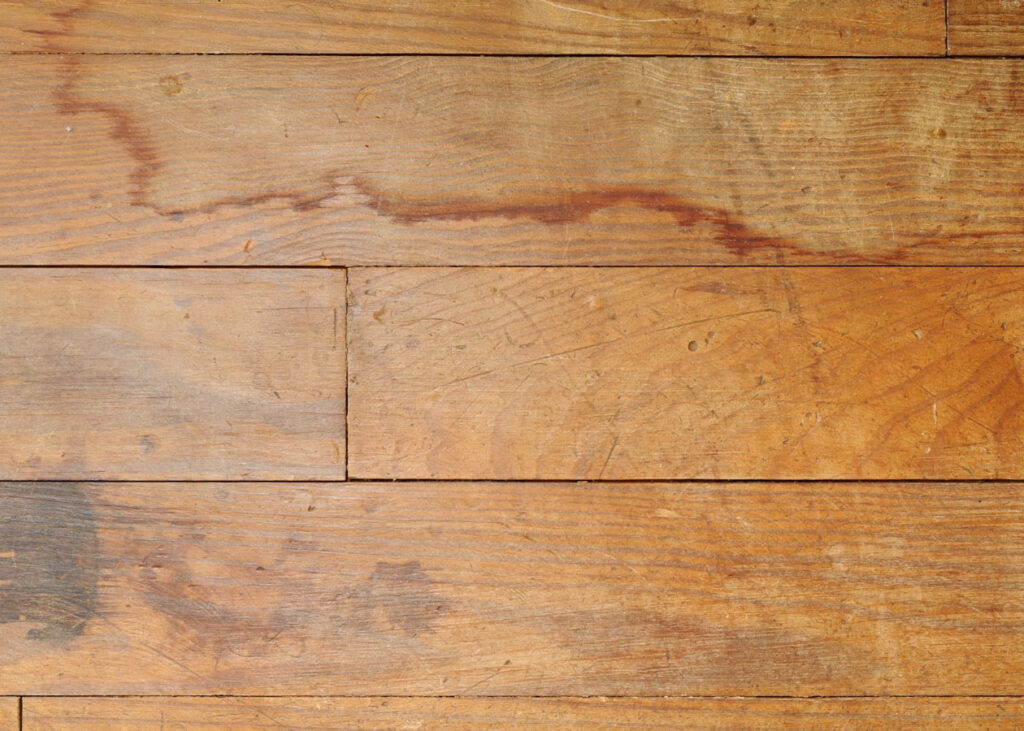
Introduction
Maintaining the pristine appearance of wood floors is a testament to homeowners’ dedication to preserving the beauty and integrity of their living spaces. However, encountering water stains on these elegant surfaces can be disheartening. In this article, we explore the nuances of addressing water stains on wood floors, from identifying the damage to implementing effective treatment methods, providing homeowners with valuable insights for restoring the luster of their wooden surfaces.
Assessing the Damage
Identifying Water Stains
Water stains on wood floors manifest in various forms, ranging from subtle discoloration to noticeable dark spots or rings. Surface discoloration may appear as faint patches or streaks, while deeper stains can result in more pronounced changes in texture and hue. Understanding these visual cues is essential for determining the appropriate course of action in treating water stains effectively.
Determining Severity
Assessing the severity of water stains involves evaluating factors such as the extent of surface penetration and the impact on wood integrity. Surface stains may be superficial and easily remedied with gentle cleaning methods, while penetrative stains require more intensive treaItment to address discoloration that extends beyond the surface layers. Additionally, the depth of the stain and its effect on the underlying wood fibers influence the complexity of the restoration process.
Understanding Wood Types
Different types of wood exhibit varying degrees of susceptibility to water damage, influenced by factors such as density, porosity, and natural resilience. Hardwood floors, prized for their durability and aesthetic appeal, may withstand water exposure better than their softwood counterparts, which are inherently more porous and prone to moisture absorption. Additionally, the presence of protective sealants or finishes can mitigate water damage by forming a barrier against moisture intrusion.
Treatment Methods
Surface Stain Removal
Surface water stains on wood floors can often be remedied using gentle cleaning solutions and non-abrasive techniques. Mild detergents or specialized wood cleaners are applied to the affected area and gently scrubbed with a soft cloth or sponge to lift surface discoloration. In cases where stains persist, light sanding and refinishing may be necessary to restore the wood’s original appearance and texture.
Penetrative Stain Remediation
Deeper water stains that have penetrated the wood fibers may require more intensive treatment methods to effectively remove discoloration. Deep cleaning agents, such as oxalic acid or hydrogen peroxide, are applied to the affected area to break down pigment molecules and lighten the stain. Bleaching agents may also be employed to further diminish stubborn discoloration. In instances where DIY efforts prove insufficient, seeking professional restoration services may be advisable to ensure thorough treatment and preservation of the wood surface.
Preventive Measures
Preventing water stains on wood floors involves adopting proactive maintenance practices and implementing protective measures to safeguard against moisture damage. Regular sweeping or vacuuming removes abrasive particles and debris that can scratch or dull the wood surface. Applying protective coatings or sealants enhances the wood’s resistance to moisture and stains, prolonging its lifespan and maintaining its aesthetic appeal. Additionally, controlling indoor humidity levels and promptly addressing spills or leaks minimizes the risk of water damage and preserves the integrity of the wood flooring.
Step-by-Step Process
Preparation
Before embarking on the water stain removal process, it is essential to prepare the workspace and gather necessary supplies. Clearing the area of furniture and obstructions provides unobstructed access to the affected floor surface. Gathering cleaning agents, soft cloths or sponges, and protective gear ensures readiness for the task at hand. Testing cleaning solutions in an inconspicuous area helps assess their compatibility with the wood finish and prevents potential damage.
Application
Applying cleaning agents to the water-stained area involves gentle yet thorough techniques to avoid exacerbating the damage. Dampening a soft cloth or sponge with the chosen cleaning solution, it is carefully applied to the stain and worked into the wood grain with gentle circular motions. Buffing and polishing the treated area with a clean, dry cloth restores shine and luster to the wood surface. Throughout the process, monitoring progress and adjusting techniques as needed ensures effective stain removal without compromising the wood’s integrity.
Aftercare
After removing water stains from the wood floor, proper aftercare is crucial for preserving the results and preventing future damage. Drying the treated area thoroughly with fans or open windows facilitates evaporation of residual moisture and prevents mold or mildew growth. Inspecting the floor for any missed spots or lingering stains allows for timely touch-ups to achieve uniform results. Implementing regular maintenance recommendations, such as periodic cleaning and reapplication of protective finishes, helps maintain the wood’s beauty and resilience over time.
Conclusion
In conclusion, effectively removing water stains from wood floors requires careful assessment, appropriate treatment methods, and preventive measures to preserve the integrity and aesthetics of the wood surface. By understanding the nature of water stains, selecting suitable treatment approaches, and implementing proactive maintenance practices, homeowners can restore the luster of their wood floors and enjoy their timeless beauty for years to come.



